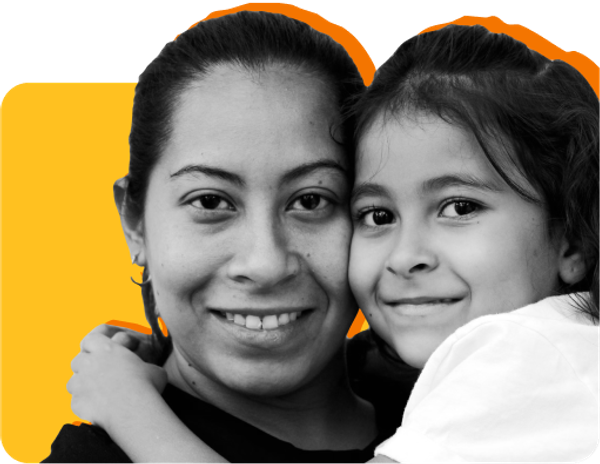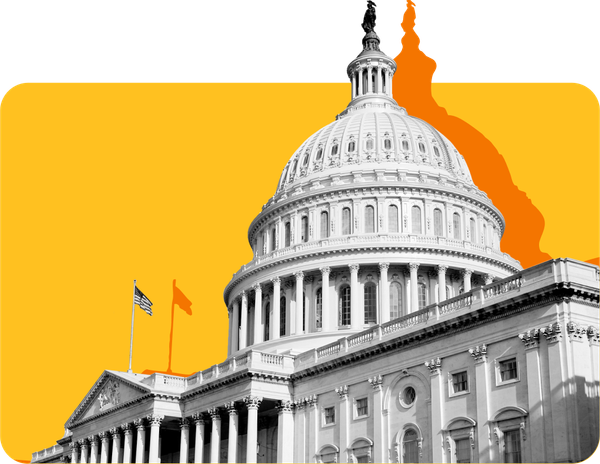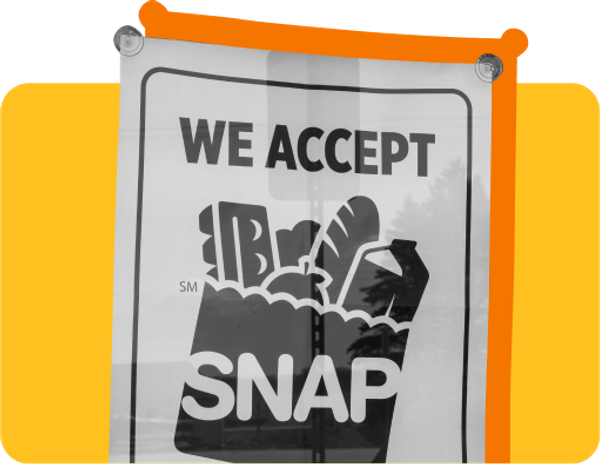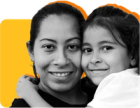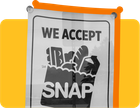

Additional expert review by
EBT isn’t actually one program, but a lot of people use it when they mean SNAP. The Supplemental Nutrition Assistance Program (SNAP) is a government program that provides monthly food benefits to help eligible low-income households buy groceries and improve their nutrition. About 42 million people in the United States—13 percent of the population—participate in SNAP.
Electronic Benefits Transfer (EBT) is just the system used to deliver SNAP benefits. EBT cards are also what you use if you get TANF, also called cash EBT. Modern EBT cards replaced paper food stamps in the late 1990s. Benefits now arrive on cards that look like regular debit or credit cards, which helps reduce stigma when shopping.
How does EBT work?#how-does-ebt-work
If you’re eligible for government benefits like SNAP or TANF (cash benefits), you'll receive an EBT card within 30 days of submitting your approved SNAP application (or seven days with expedited assistance).
After setting a PIN, you can start using your EBT card like a debit card at grocery stores accepting EBT. You’ll be able to use your card in other states, though moving requires reapplying in your new state.

SNAP benefits arrive on the same day each month and can be used on eligible food items such as milk, eggs, meat, and snacks. Unused balances roll over each month, and you can track your balance and secure your card using apps like Propel.
What’s the difference between EBT, SNAP, food stamps, WIC, cash assistance, and TANF?#whats-the-difference-between-ebt-snap-food-stamps-wic-cash-assistance-and-tanf
It’s easy to get confused about different government benefits programs, especially since several programs use EBT cards to distribute funds.
- SNAP stands for the Supplemental Nutrition Assistance Program, formerly known as the Food Stamps Program.
- Cash assistance are benefits that can be used for qualifying non-food items. Temporary Assistance for Needy Families (TANF) is the most common type of cash assistance and is typically added to EBT cards as "cash EBT"—a separate balance from SNAP benefits.
- TANF provides cash benefits to families with children to pay for basic needs like housing, utilities, and clothing while working toward financial independence.
- EBT stands for Electronic Benefits Transfer and is the transaction method for benefits like SNAP or TANF. Your EBT card works like a prepaid debit card.
- WIC stands for the Special Supplemental Nutrition Program for Women, Infants, and Children. WIC provides nutrition support, health resources, and food for pregnant people, new parents, infants, and children under five. Eligible families get an eWIC card that’s separate from a SNAP or cash EBT card to buy only specific approved foods in their "WIC package" from grocery stores or WIC retailers.
You may qualify for more than one program at a time—in fact many people get SNAP and then also get WIC benefits when they’re pregnant or have a new baby.
Applying for EBT#applying-for-ebt
To apply for SNAP and get an EBT card, fill out an application through your state program. SNAP is available in all 50 states, along with D.C., Guam, and the U.S. Virgin Islands, while Puerto Rico has the Nutrition Assistance Program (NAP).
In most states, able-bodied adults without dependents (ABAWDs) ages 18-54 must meet work requirements for SNAP benefits. People who can't meet them may only qualify for SNAP for a limited time. States can request waivers in high-unemployment areas or extend time limits in certain cases.
The work requirements for eligible ABAWDs include:
- Registering for work
- Not quitting or intentionally reducing your hours at your current job
- Accepting any job offer
- Joining an employment training (if your state requires)
Many eligible SNAP applicants within the 18-54 age group, including seniors and pregnant people, don’t need to meet these requirements.
You may be able to get SNAP as a college student if you meet the other eligibility requirements and at least one exemption. The exemptions include participating in federal work study, working at least 20 hours a week, and more.
What happens after you submit your SNAP application?#what-happens-after-you-submit-your-snap-application
After you submit your SNAP application, you'll learn within 30 days whether or not you qualify for benefits. Your local SNAP agency will review your documents and complete an interview to verify your information. Once approved, you'll receive an EBT card with monthly benefits.
You may be able to qualify for expedited benefits and receive an EBT card within seven days if:
- Your monthly income is under $150 and you have less than $100 in the bank
- Your income plus available cash is less than your housing and utility costs
- Someone in your household is a migrant or seasonal farm worker with less than $100 in cash/bank funds
Renewing your SNAP benefits#renewing-your-snap-benefits
Once you’re approved for SNAP, you'll need to renew regularly—typically every six months, though sometimes your eligibility period is 12 months or longer or less than six months. You’ll be told what to report and how often when you first start receiving benefits. Your state will also mail notices about renewal deadlines.
To stay enrolled and make sure you don’t lose your EBT benefits:
- Keep your address updated
- Submit renewal paperwork on time (often through online portals)
- Follow your state's specific reporting requirements
Missing deadlines is a common reason people lose their SNAP benefits.
What to know about EBT fraud#what-to-know-about-ebt-fraud
EBT fraud—when people or stores misuse benefits on purpose—doesn't happen often. Just remember that you shouldn't give false income information to your SNAP office or trade your benefits for cash.
SNAP recipients who break program rules may temporarily or permanently lose their benefits. They’ll have to repay benefits and may face criminal charges. If someone accuses you of fraud, reach out to a free legal aid service in your state.
How to use your EBT card#how-to-use-your-ebt-card
Your EBT card will arrive in a plain white envelope up to seven business days after your SNAP application is approved. You’ll need to choose a personal identification number (PIN). Choose one that isn’t easy to guess (like 1234 or 2580) and that doesn’t use repeated or consecutive numbers.
Each month that you’re eligible for SNAP, your state will deposit an amount of money into your EBT account that you can spend on groceries at participating retailers. Every state has a different deposit schedule. Funds are typically deposited on the same day each month.
If you don't use all your available SNAP benefits in a given month, you can use any leftover benefits the next month. The benefits from the unused month will be used first before the current month.
Unused benefits eventually expire after a certain period of time, so check the rules in your state.
You can also use your EBT card in a different state if you’re traveling, but keep in mind that using your benefits consistently outside of your home state will raise red flags.
Most importantly, you can only use SNAP EBT for food items. If you're buying non-food items, you can choose to pay using some EBT funds plus another method, such as cash or a different card. To do this, ask the cashier to ring up items that aren't SNAP eligible separately.
Find a list of retailers in your area by using the SNAP Retailer Locator. You can also buy food with EBT at farmers markets. For a list of online retailers that accept EBT, select your location using this map.

Step-by-step instructions for using your EBT card#step-by-step-instructions-for-using-your-ebt-card
- Swipe your card like you would any other card at checkout
- On the point-of-sale terminal, enter your PIN number
- Either tell the cashier or enter the amount of benefits you want to use
You can use your SNAP benefits to buy
- Fruits and vegetables
- Meat, poultry, or fish
- Dairy products like cheese, yogurt, and milk
- Eggs
- Bread, cereal, pasta, and grains
- Snack foods like chips, crackers, and popcorn
- Nonalcoholic beverages like juice, soda, or bottled water
- Plants and seeds that produce food
You cannot use your SNAP benefits to buy
- Alcohol or tobacco
- Vitamins, supplements, or medications
- Live animals (except shellfish or fish)
- Foods that are hot when purchased (unless you’re part of the Restaurant Meals Program)
- Non-food items like cleaning supplies or clothing
Managing your EBT account#managing-your-ebt-account
Managing your EBT card is like managing a debit account. You can check your balance, change your PIN, or get a replacement for a lost or stolen card.
You can check your EBT balance in a few different ways:
- Many retailers will print your EBT balance on your receipt
- Your state may give you online account access
- You can call your state's toll-free EBT customer service line on the back of your card
- You can use a mobile app like Propel
How to change your EBT card PIN#how-to-change-your-ebt-card-pin
Call your state’s EBT customer service line to change your PIN. An agent will ask you a few questions to confirm your identity and then walk you through the process of selecting a new PIN.
How to report a lost or stolen EBT card#how-to-report-a-lost-or-stolen-ebt-card
If your EBT card goes missing, call your state's EBT customer service right away. They'll deactivate your card immediately to protect your remaining balance, tell you how to get a replacement card, and help you set up a new PIN once it arrives.
Protecting your EBT card from theft#protecting-your-ebt-card-from-theft
Unfortunately, SNAP benefits recipients have been targeted by scams and theft. There are some important ways you can protect your EBT card to reduce the risk of theft:
- Check your balance often to make sure you don't have any unauthorized charges
- Change your EBT PIN regularly
- Don't share your EBT PIN with anyone who isn't authorized to use your card
SNAP agency workers will never text, call, or email you to ask for your PIN. If you get a call or message asking for your PIN, don't share it. Avoid writing down your PIN on anything you keep in your wallet or bag, and cover your hand when entering your PIN on a keypad.
When you're about to swipe your card, check the card terminal at grocery stores, gas stations, etc. Sometimes thieves mess with card readers to steal your info. Look for anything that seems fishy, such as:
- Glue or damaged/loose parts
- Crooked or hard-to-push keypads
- Anything that looks like it’s out of alignment or out of place
If anything looks suspicious, report the issue to a store manager.
Propel and other apps can also help you guard against theft. Propel has built-in security features, such as:
- Blocking out-of-state transactions
- Monitoring for suspicious transactions
- Card-locking (currently only for users in California and Oklahoma)
Tips for maximizing your EBT benefits#tips-for-maximizing-your-ebt-benefits
Checking your balance regularly and taking steps to guard against theft are important tips for managing your EBT benefits, but there are other ways to make sure you get the most bang for your buck when it comes to EBT.
1. See if you can double your benefits when buying fresh produce#1-see-if-you-can-double-your-benefits-when-buying-fresh-produce
SNAP benefits can go twice as far at participating farmers markets and grocery stores through programs like Double Up Food Bucks and Market Match, which match your SNAP spending dollar-for-dollar when you buy fresh fruits and vegetables. Check if your state offers these programs and find participating locations.
2. Grow some of your own food to get the most out of your SNAP dollars#2-grow-some-of-your-own-food-to-get-the-most-out-of-your-snap-dollars
You can use SNAP benefits to buy seeds and plants to grow your own food—a lesser-known but cost-effective option for people with outdoor space. While gardening takes more work than buying groceries, every dollar spent on seeds and fertilizer can grow about $25 worth of food on average.
3. Search for exclusive discounts for EBT cardholders and other government benefit programs#3-search-for-exclusive-discounts-for-ebt-cardholders-and-other-government-benefit-programs
Many retailers like Amazon and Sam’s Club offer discounted memberships to government benefits recipients. Participating in SNAP will often automatically qualify you for other types of assistance, such as LIHEAP, a utility assistance program for low-income households.
4. Get free or discounted admission to museums, zoos, and more with your EBT card#4-get-free-or-discounted-admission-to-museums-zoos-and-more-with-your-ebt-card
SNAP recipients can enjoy free or reduced admission at over 1,300 museums nationwide through Museums for All. Many zoos, aquariums, and theme parks also offer discounts to EBT cardholders, such as Massachusetts' Card to Culture program.

